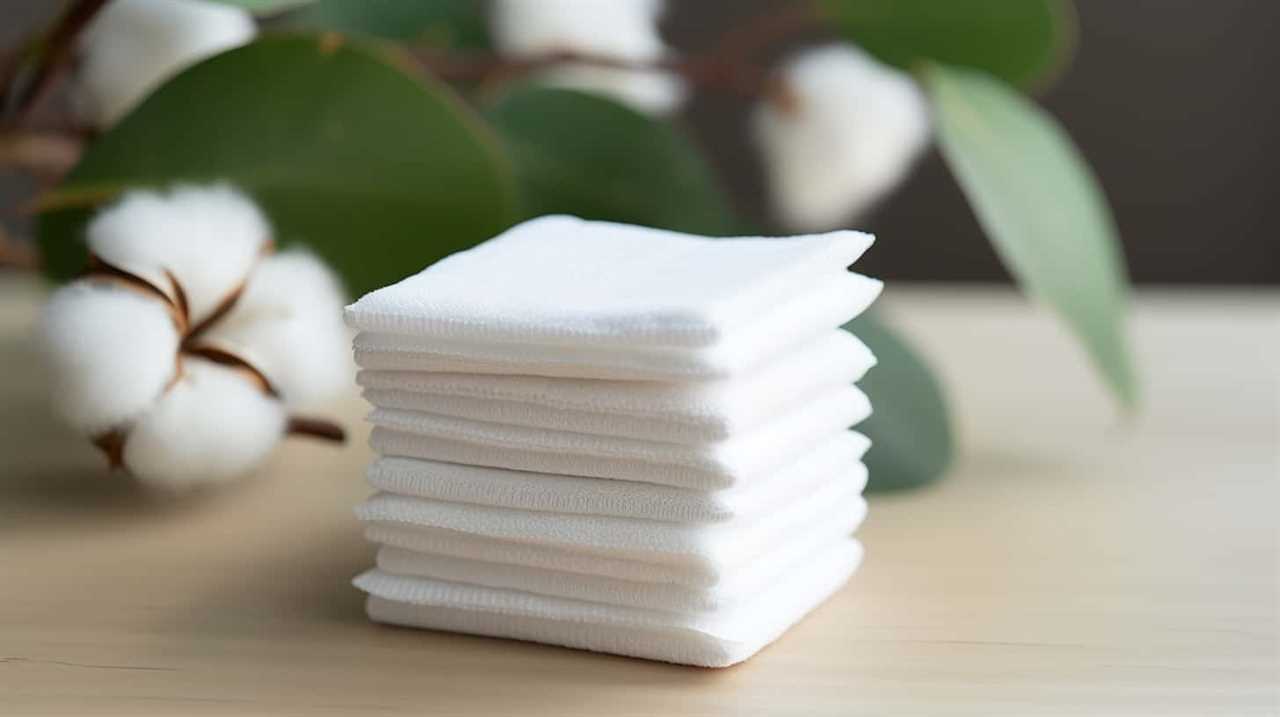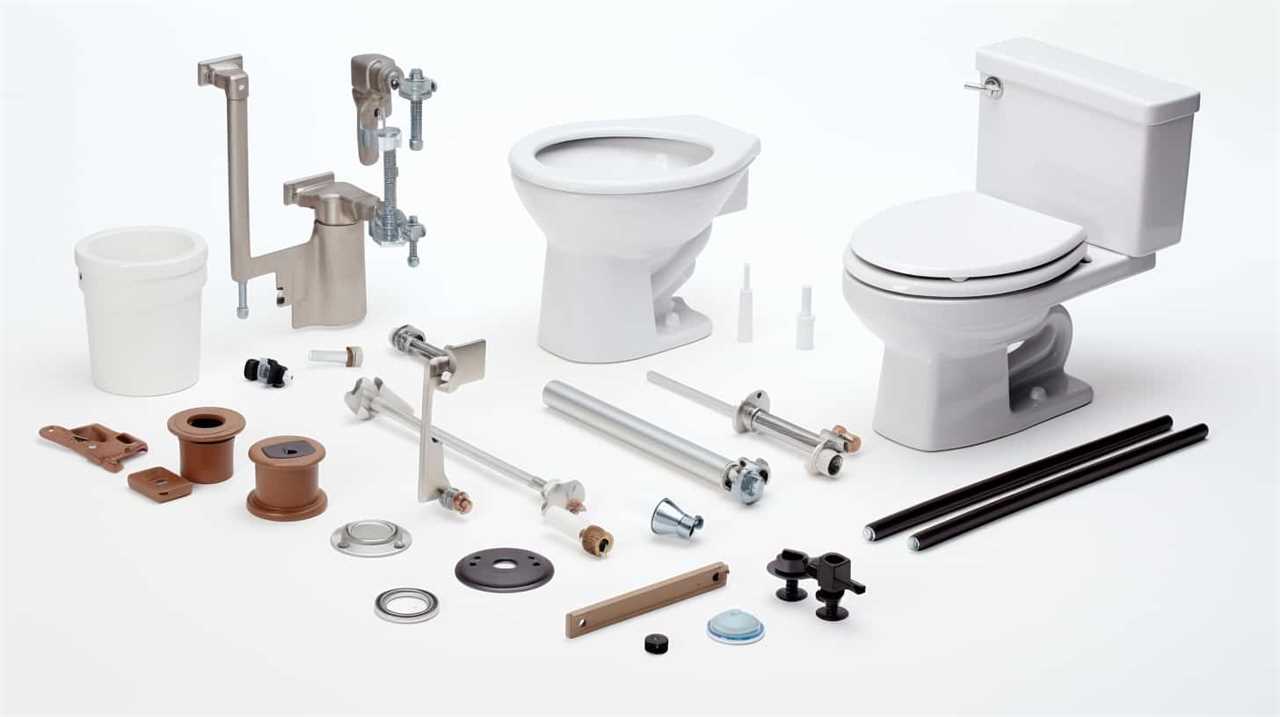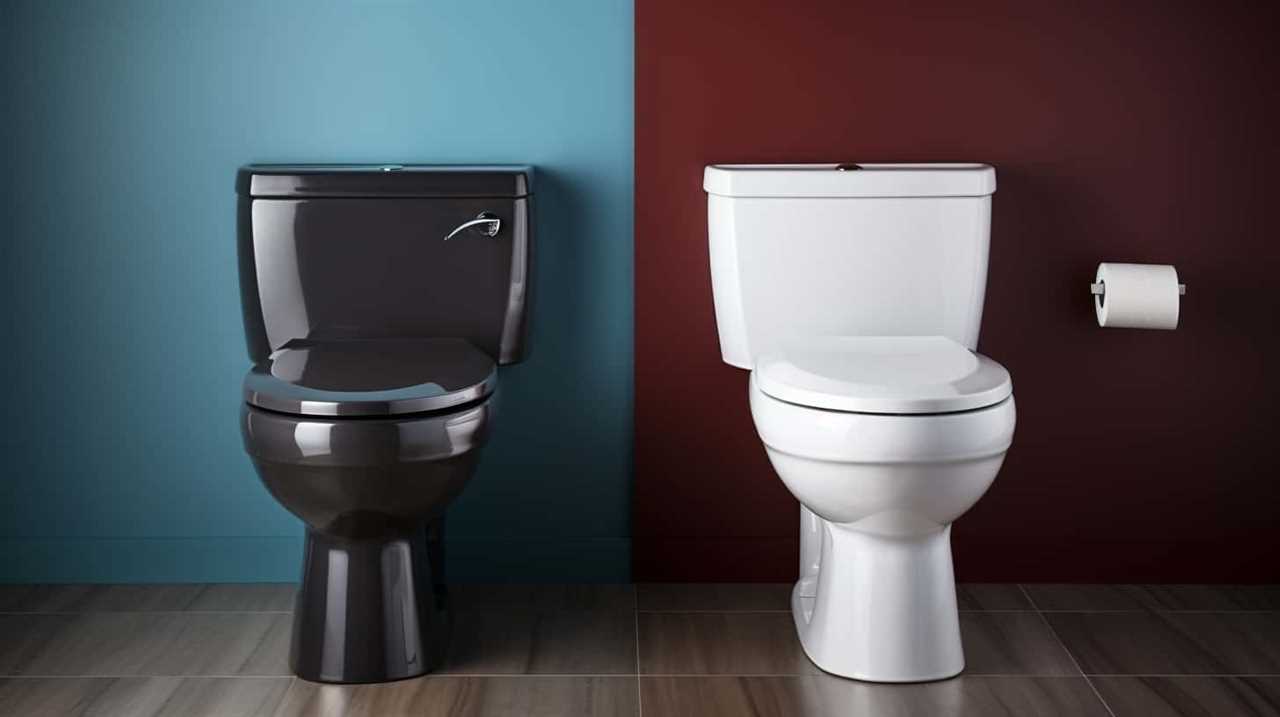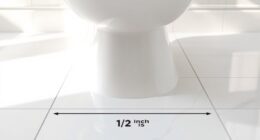- Gum disposal methods: How to properly dispose of gum without flushing it down the toilet?
- Gum recycling options: Are there any recycling programs or initiatives for used gum?
Were you aware that annually, Americans consume around 100,000 tons of chewing gum?
But what happens to all that gum once we’re done chewing?
In this article, we will explore the question, ‘Should I flush my gum?’
We’ll examine the environmental impact of flushing gum, potential plumbing problems it can cause, and alternative disposal methods.

By the end, you’ll have a better understanding of the biodegradability of gum and expert opinions on whether it’s safe to flush.
Let’s dive in!
Key Takeaways
- Flushing gum generates large quantities of non-biodegradable waste that contributes to pollution in water systems and landfills.
- Gum blockages in plumbing systems can occur due to gum not breaking down easily in water and sticking to pipes over time.
- Properly disposing of gum in designated trash bins prevents potential gum blockages and alleviates the burden on sewage systems.
- Experts advise against flushing gum due to its negative effects on the environment, sewage systems, and potential harm to aquatic life.
The Environmental Impact of Flushing Gum
Flushing gum has a significant environmental impact due to the large quantities of non-biodegradable waste it generates. Traditional gum, made of synthetic polymers, takes years to decompose, contributing to pollution in water systems and landfills.
However, there are alternatives available. Biodegradable gum options, made from natural ingredients like chicle or other plant-based materials, offer a more sustainable choice. These gums break down naturally over time, reducing the environmental burden caused by discarded gum.

Additionally, gum recycling initiatives have emerged to address the issue. Some organizations collect discarded gum and repurpose it into useful products like shoes or plastic pellets. These initiatives promote responsible gum disposal and provide a solution to the waste problem.
Potential Plumbing Problems Caused by Gum Flushing
What potential plumbing problems can arise from flushing gum? Flushing gum down the toilet or sink can lead to potential gum blockages in your plumbing system. Gum is not biodegradable and does not break down easily in water. As a result, it can stick to the pipes and accumulate over time, causing clogs and blockages. To illustrate the potential impact, consider the following table:
| Potential Plumbing Problems Caused by Gum Flushing |
|---|
| 1. Clogged pipes |
| 2. Reduced water flow |
| 3. Backed-up drains |
| 4. Expensive plumbing repairs |
To avoid these issues, it is recommended to dispose of gum properly by wrapping it in tissue or paper and throwing it in the trash. By doing so, you can prevent potential gum blockages and maintain the functionality of your plumbing system.
Alternatives to Flushing Gum Down the Toilet
Instead of flushing gum down the toilet, we can explore more environmentally friendly options for disposal. Here are four alternatives to consider:

- Recycling options: Many gum manufacturers now offer recycling programs for their products. Look for recycling bins specifically designated for gum disposal or check with your local recycling center for guidance on how to properly recycle gum.
- Composting alternatives: Gum made from natural ingredients can be composted. However, it’s important to check if your gum is biodegradable and suitable for composting. If so, add it to your compost pile and let it break down naturally over time.
- Gum disposal containers: Invest in small, portable gum disposal containers that you can carry with you. These containers are designed to safely store used gum until you can dispose of it in a proper waste bin.
- Gum wrapper disposal: If you’re discarding gum wrappers, ensure they’re properly disposed of in waste bins. Avoid littering or tossing them in recycling bins meant for other materials.
The Biodegradability of Gum and Its Impact on Sewage Systems
When considering the impact of gum on sewage systems, we must take into account its biodegradability and potential consequences.
Gum is primarily composed of synthetic polymers, such as synthetic rubber, which aren’t easily broken down by natural processes. The biodegradation rate of gum in natural environments is extremely slow, often taking years or even decades.
This poses significant challenges in gum waste management, as flushed gum can accumulate in sewage systems, causing blockages and costly repairs. Additionally, the sticky nature of gum can adhere to other debris in the sewage system, further exacerbating the problem.
Therefore, it’s crucial to properly dispose of gum in designated trash bins rather than flushing it down the toilet. This will help alleviate the burden on sewage systems and prevent potential environmental and economic consequences.

In the following section, we’ll explore expert opinions on whether it’s safe to flush gum.
Expert Opinions on Whether It Is Safe to Flush Gum
After considering the potential consequences of flushing gum, experts in the field advise against this practice. Flushing gum may seem like a convenient way to dispose of it, but it can have negative effects on both the environment and sewage systems.
Here are four reasons why experts recommend against flushing gum:
- Gum isn’t biodegradable: Unlike other organic waste, gum doesn’t break down easily in water. Flushing it can contribute to blockages in sewer pipes.
- Environmental impact: When gum enters water bodies, it can harm aquatic life and disrupt ecosystems.
- Sewage system maintenance: Gum can stick to pipes and cause clogs, leading to expensive repairs and maintenance.
- The role of gum manufacturers: Gum manufacturers should promote responsible disposal methods, such as wrapping gum in tissue or using designated gum disposal containers.
It is important to consider the pros and cons of gum disposal methods and the responsibility of gum manufacturers in promoting responsible disposal.

Frequently Asked Questions
Can Flushing Gum Down the Toilet Lead to Clogged Pipes or Sewage Backups in My Home?
Flushing gum down the toilet can lead to clogged pipes and sewage backups in our home. It’s important to remember that gum doesn’t dissolve easily and can stick to the pipes, causing blockages.
Are There Any Negative Effects of Flushing Gum on the Environment?
Flushing gum can have negative effects on the environment. It takes years to break down and can harm marine life if it ends up in waterways. Let’s explore the environmental impact of flushing gum.
What Are Some Alternative Methods for Disposing of Gum?
Alternative methods for disposing of gum include wrapping it in tissue and throwing it in a trash can, or using gum disposal bins. These eco-friendly options help minimize environmental impact and maintain cleanliness in public spaces.
Can Gum Biodegrade in Sewage Systems, or Does It Pose a Risk to the Infrastructure?
Gum disposal impacts wastewater treatment plants due to its poor biodegradability. Flushing gum poses a risk to the infrastructure as it can clog pipes and cause costly damages. Proper disposal methods should be followed to avoid such issues.

Have Any Experts Provided Recommendations on Whether It Is Safe to Flush Gum Down the Toilet?
Experts have provided recommendations on safe gum disposal methods, including not flushing it down the toilet. Recycling programs and initiatives for used gum are available. We’ll discuss these subtopics in an informative, professional, and scientific manner.
Conclusion
In conclusion, when it comes to the question of whether to flush gum, it’s best to err on the side of caution. Flushing gum can have detrimental effects on the environment and cause plumbing issues.
Instead, consider disposing of gum in the trash or using gum disposal devices. Let’s keep our sewage systems flowing smoothly and protect our environment by making responsible choices with our gum disposal habits.










